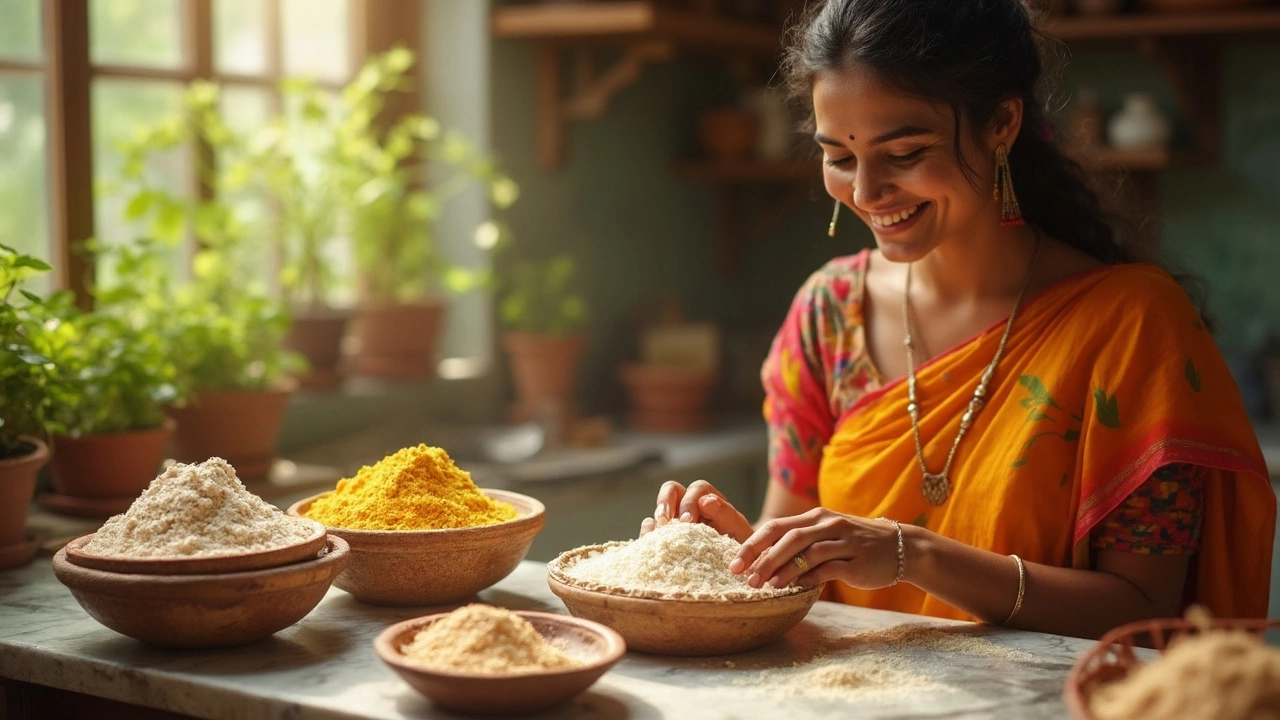Atta vs Whole Wheat Flour: Which One Suits Your Kitchen?
When you shop for flour in India, you’ll see two names that look similar: atta and whole wheat flour. They both come from wheat, but the way they’re milled and the texture they give to food can be quite different. Knowing these differences helps you decide which flour to reach for when you’re making rotis, cakes, or snacks.
Nutrition and Texture
Atta is traditionally stone‑ground, which means the whole grain – bran, germ, and endosperm – stays together. This gives it a slightly coarse feel and a nutty aroma. Because the bran and germ are intact, atta packs more fiber, iron, and B‑vitamins than many refined flours. Whole wheat flour sold in supermarkets is often milled in steel rollers. It can be a finer powder, but the nutritional profile is similar if it’s truly “whole wheat.” Check the label: true whole wheat flour will list “100% whole grain” and not just “enriched wheat flour.”
Cooking Tips and Best Uses
If you love soft, fluffy chapatis, you might prefer the finer, bleached whole wheat flour that many bakeries use. It rolls out smoother and absorbs water quickly, so the dough is less sticky. Atta, on the other hand, gives you a heartier bite – perfect for rustic parathas or layered dosas where you want a bit of texture. For baked goods like muffins or banana bread, either flour works, but you’ll need to adjust the liquid: atta can soak up a little more water because of its coarser grain.
One practical tip: start with a 1:1 swap, then taste the batter or dough. If it feels too thick, add a tablespoon of water or milk at a time. If it’s too runny, sprinkle a bit more flour. This trial‑and‑error approach lets you enjoy the health perks of whole grain without sacrificing taste.
People often wonder about gluten. Both atta and whole wheat flour contain gluten because they come from the same wheat variety. The stone‑ground process of atta doesn’t change gluten levels, so both flours will give you that stretchy dough needed for flatbreads. If you need a low‑gluten option, you’ll have to look beyond these two.
In short, choose atta when you want a rustic texture and extra fiber, and reach for fine whole wheat flour when you need a smooth dough for delicate pastries. Either way, you’re getting a whole‑grain product that’s healthier than refined white flour. Experiment, note how the dough feels, and soon you’ll know which flour wins in your kitchen.
Best Flour for Soft and Tasty Roti: Choosing the Right One for You
Unravel the secrets behind choosing the best flour for roti. Get facts, tips, and flavor comparisons so you can make mouth-watering, perfectly soft rotis every time.
